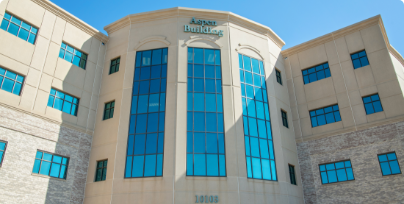What is Achalasia?
Achalasia is a rare, chronic disorder in which your esophagus cannot move food and liquids down into your stomach. It is believed to be caused when nerves in the esophagus become damaged or stop working. Over time, the esophagus becomes paralyzed, losing its ability to work properly.
Achalasia signs are usually gradual and worsen over time. Common symptoms include:
- Inability to swallow (dysphagia).
- Heartburn.
- Belching.
- Regurgitation of saliva or food.
- Intermitted chest pain.
- Coughing at night.
- Weight loss.
- Vomiting.
Who Can Get Achalasia?
This condition is rare, developing in 1 in every 100,000 people in the United States each year. While adults between the ages of 25 and 60 usually develop achalasia, it can occur in children as well. Men and women are both equally affected by this disorder.
How is Achalasia Diagnosed?
There are three tests that are commonly performed to diagnose achalasia, including:
Barium Swallow
During this test, you will swallow a barium preparation. An X-ray will then be used to track its movement through your esophagus. This will show if there is a narrowing of the esophagus at the lower esophageal sphincter (LES), which is a sign of achalasia.
Upper Endoscopy
This test involves inserting a narrow, flexible tube with a camera on it (endoscope) down your esophagus. The camera will work to show images of the inside of your esophagus onto a screen for our GI team’s evaluation.
Esophageal Manometry
This test is used to measure the strength and timing of your esophageal muscle contractions and relaxation of the lower esophageal sphincter (LES). If your LES does not relax in response to swallowing or there is a lack of contractions along with the esophageal wall, achalasia may be diagnosed.
Achalasia Treatment Options
There are a variety of treatment options available, including both nonsurgical and surgical options. The main goal of treatment is to manage your symptoms by relaxing the lower esophageal sphincter (LES) so that food and liquid can move more easily along the digestive tract.
Minimally Invasive Surgery
This procedure, called laparoscopic Heller myotomy, involves inserting a narrow, flexible tube with a camera on it (endoscope) through a small incision. The muscle fibers of the lower end of the esophageal sphincter are cut to allow food to pass more easily to the stomach. Because gastroesophageal reflux disease (GERD) may be a result of this procedure, an additional surgery known as fundoplication may be performed at the same time to prevent GERD.
Balloon Dilation
This procedure is performed under light sedation, and a special balloon is inserted through the lower esophageal sphincter (LES) and then inflated. This will relax the muscle sphincter, allowing food to enter the stomach. Several treatments may be necessary to relieve your symptoms.
Medication
Individuals who do not wish to undergo surgery or are not a candidate for surgery may benefit from BOTOX® injections. When injected into the muscles in small quantities, BOTOX® can help to relax the sphincter muscles. Repeated injections are needed to maintain results.
Other medications to relax the spastic esophageal muscles may also be prescribed, though they may be less effective than surgery.
Esophagectomy
As a last resort treatment, removal of the esophagus may be performed.
There are also lifestyle changes that may help improve your symptoms, including cutting your food into small pieces and eating in an upright position, avoiding eating solid foods at bedtime and sleeping with your head elevated to decrease your risk for aspiration.
Your South Denver GI Team
At South Denver GI, our team of physicians and advanced practice providers have the expertise to provide you with outstanding care. If you would like to learn more about Achalasia or need to schedule an appointment at our office, contact us today!
View All Our Providers
Contact Us Today
If you are experiencing signs or symptoms of achalasia and are seeking diagnosis or treatment, contact South Denver GI today. Our friendly team will be happy to schedule your initial appointment with one of our providers.
Contact UsRequest Appointment
Click on the Schedule Appointment button to schedule an appointment with your South Denver GI provider online. If you do not wish to use our convenient online scheduling tool, please fill out the form below and our team will contact you shortly.







